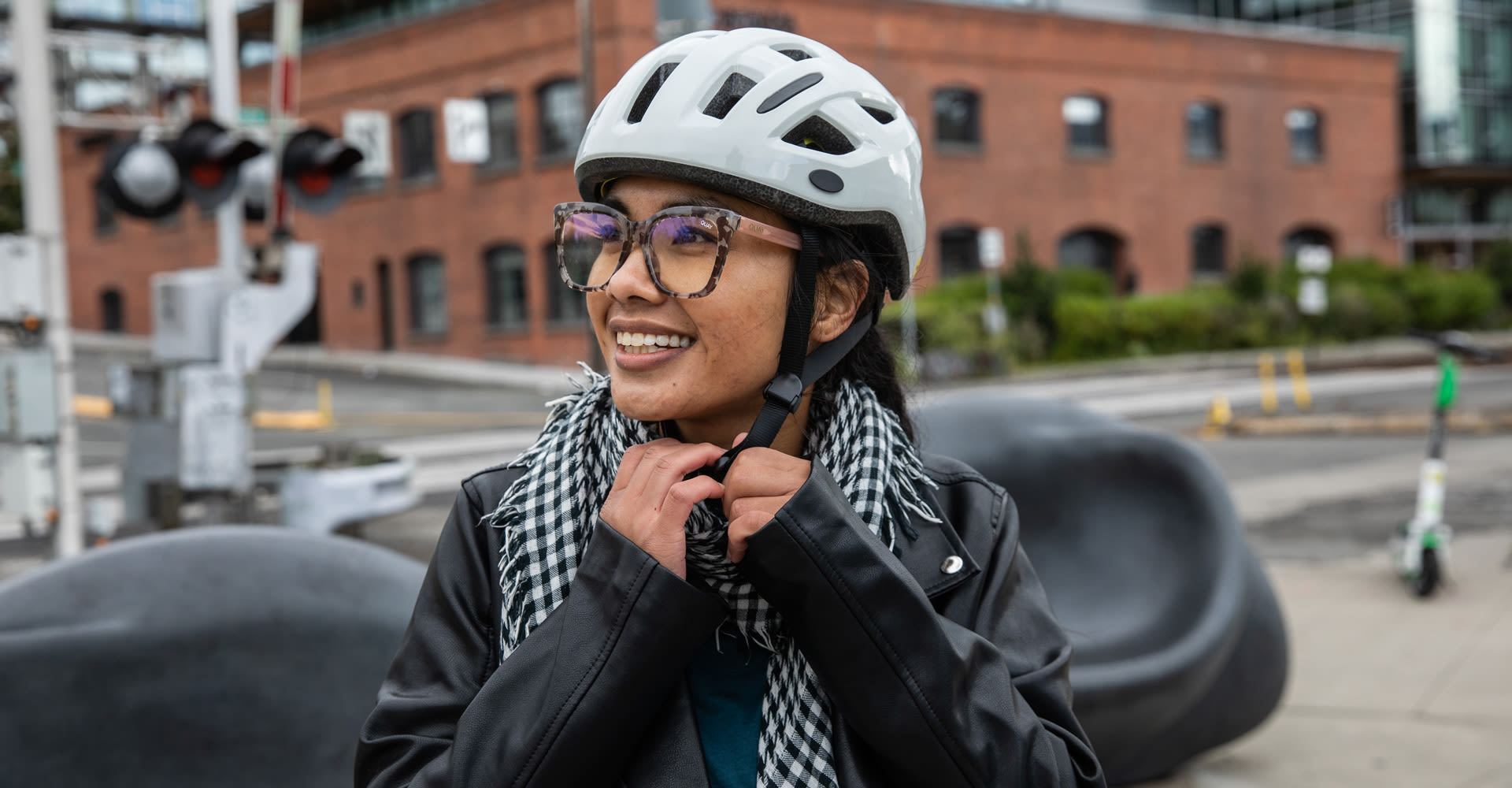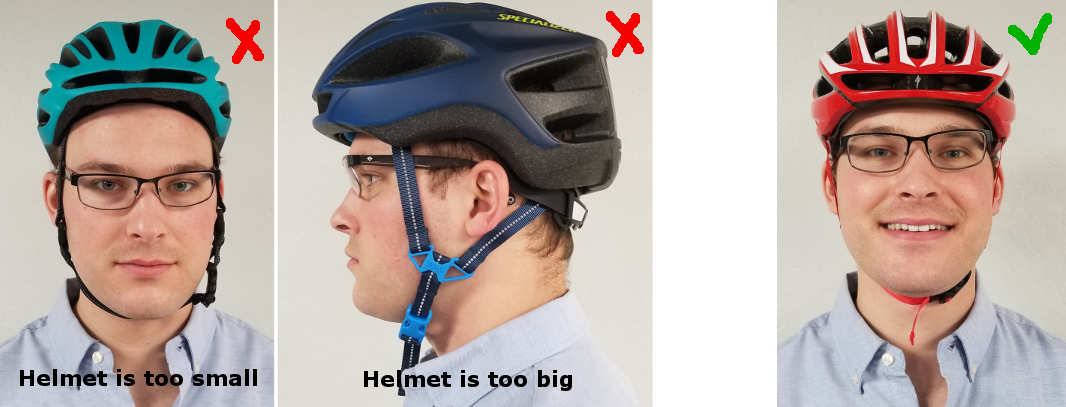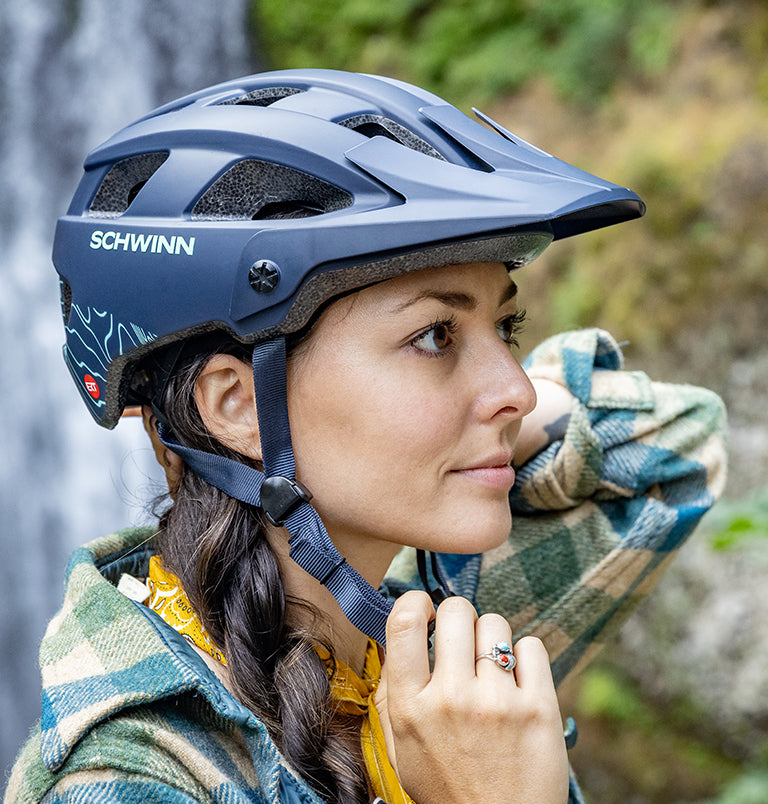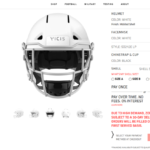A bike helmet should fit snugly, sitting level on your head. It should not tilt forward or backward.
Wearing a properly fitting bike helmet is crucial for safety. A helmet that fits well protects your head during accidents. To ensure a good fit, adjust the straps and padding. The helmet should sit level on your head and not move when you shake it.
The front edge should be one to two finger-widths above your eyebrows. Tighten the chin strap so only one or two fingers can fit between the strap and your chin. Regularly check and adjust your helmet to maintain its fit. A well-fitted helmet can significantly reduce the risk of head injuries while cycling.

Credit: www.liv-cycling.com
Importance Of A Proper Fit
A properly fitting bike helmet is crucial for safety. It ensures the helmet protects your head during a fall or crash. A poor fit can lead to serious injuries. Below, we explore why fit matters and the consequences of a poor fit.
Why Fit Matters
A bike helmet that fits well offers maximum protection. It stays in place during impact, shielding the head. Here are some key reasons why fit matters:
- Optimal Protection: A snug fit ensures the helmet absorbs impact effectively.
- Comfort: A well-fitted helmet is comfortable, encouraging regular use.
- Stability: Proper fit prevents the helmet from shifting or falling off.
Consequences Of Poor Fit
Wearing a poorly fitted helmet can be dangerous. Here are some potential consequences:
| Consequences | Description |
|---|---|
| Increased Risk of Injury | A loose helmet may not protect your head during a crash. |
| Discomfort | An ill-fitting helmet can cause headaches or pressure points. |
| Reduced Focus | A shifting helmet can distract you while riding. |
Ensuring a proper fit is essential for your safety on the road. Always take the time to adjust your helmet correctly.
Measuring Your Head
To ensure your bike helmet fits perfectly, you must measure your head. An accurate measurement will help you select the right helmet size. A well-fitting helmet provides better protection and comfort.
Tools Needed
- Flexible measuring tape
- Mirror
- Notepad and pen
Steps To Measure
- Wrap the tape: Place the measuring tape around your head. Position it about one inch above your eyebrows.
- Check alignment: Use a mirror to ensure the tape is level.
- Note the measurement: Write down the measurement in centimeters or inches.
- Repeat for accuracy: Measure twice to confirm the number.
Once you have your head size, compare it with the helmet size chart. Different brands may have varying sizes, so always check their specific chart.
| Head Size (cm) | Helmet Size |
|---|---|
| 50-54 | Small |
| 55-59 | Medium |
| 60-64 | Large |
Choosing the right size is crucial. A well-fitted helmet can save your life. Follow these steps carefully to ensure safety and comfort on your rides.
Choosing The Right Size
Finding the perfect bike helmet size is crucial for safety. A well-fitted helmet offers the best protection during rides. Here’s how to choose the right size for your helmet.
Size Charts
Most helmet brands offer size charts. These charts help you find the best fit. Always measure your head before using a size chart. Use a flexible tape measure for accuracy.
| Head Circumference (cm) | Helmet Size |
|---|---|
| 50-54 cm | Small |
| 54-58 cm | Medium |
| 58-62 cm | Large |
Adjustable Helmets
Many helmets come with adjustable features. These make it easier to get a snug fit. Look for helmets with adjustable straps and dials.
- Adjustable Straps: Ensure the straps form a “V” under your ears.
- Rear Dial: Turn the dial to tighten or loosen the fit.
Helmet Positioning
Proper helmet positioning is key to ensuring maximum safety while biking. A well-fitted helmet can protect your head from serious injuries. Let’s explore how to position your helmet correctly.
Front To Back
Your helmet should sit level on your head. It must cover the top of your forehead. The front of the helmet should be about two fingers above your eyebrows. This ensures it protects both the front and back of your head.
Side To Side
The helmet should fit snugly without shifting from side to side. Use the adjustment dial or pads to get a good fit. The straps should form a “V” shape under your ears. Ensure the side straps are not too loose or too tight.
| Key Points | Details |
|---|---|
| Level Helmet | Sits level on head, not tilted |
| Forehead Coverage | Two fingers above eyebrows |
| Snug Fit | No shifting side to side |
| Strap Position | “V” shape under ears |
Remember to check your helmet fit regularly. Kids grow fast, so adjust the fit as needed. Stay safe and enjoy your ride!
Strap Adjustments
Ensuring your bike helmet fits correctly is crucial for safety. One key aspect is adjusting the straps properly. Below are essential tips for chin and side straps adjustments.
Chin Straps
The chin strap should be snug but comfortable. Follow these steps:
- Place the helmet on your head.
- Fasten the chin strap.
- Ensure the strap sits under your chin.
- Adjust the buckle to make the strap snug.
- Check if you can fit one finger between your chin and the strap.
A snug chin strap keeps the helmet in place during a fall. Make sure it does not pinch or cause discomfort.
Side Straps
Properly adjusted side straps ensure the helmet stays centered. Follow these steps:
- Put on the helmet.
- Locate the side straps, which form a “Y” shape.
- Adjust the straps so the “Y” sits just below your earlobes.
- Use the sliders to adjust the length of each strap.
- Ensure both sides are even.
Side straps help keep the helmet stable. Check the fit regularly to ensure it remains comfortable.

Credit: lazersport.us
Comfort And Padding
A bike helmet must fit well for safety and comfort. Comfort and padding are key aspects of a good fit. The helmet should feel snug yet comfortable. Padding plays an important role in this. It cushions your head and ensures a snug fit.
Types Of Padding
Helmets come with different types of padding. Each type has its own benefits. Here are the common types:
- Standard Foam Pads: These are basic and provide good comfort.
- Gel Pads: Gel pads offer more comfort and can mold to your head shape.
- Memory Foam Pads: These pads adjust to your head over time, providing a custom fit.
Choose padding based on your comfort needs. Some helmets let you switch pads out. This feature is helpful for finding the perfect fit.
Replacing Worn Pads
Padding can wear out over time. Worn pads can affect the helmet’s comfort and fit. Here’s how to know when to replace them:
- Check for signs of wear like tears or flat spots.
- If the helmet feels loose, the padding might be worn out.
- Replace pads every 6-12 months for optimal comfort.
Most helmet brands sell replacement pads. Always buy pads that match your helmet model. This ensures a proper fit and maintains safety standards.
| Type of Padding | Comfort Level | Replacement Frequency |
|---|---|---|
| Standard Foam Pads | Good | 6-12 months |
| Gel Pads | Better | 6-12 months |
| Memory Foam Pads | Best | 6-12 months |
Comfort and padding are crucial for a helmet’s fit. Choose the right type and replace worn pads regularly for the best experience.
Helmet Maintenance
Maintaining your bike helmet is crucial for safety and longevity. A well-maintained helmet ensures maximum protection during rides. Let’s explore how you can keep your helmet in top shape.
Cleaning Tips
Cleaning your helmet regularly keeps it fresh and functional. Follow these simple steps to clean your helmet:
- Remove the padding: Take out any removable padding inside the helmet.
- Use mild soap: Mix mild soap with warm water.
- Wash gently: Use a soft cloth to clean the helmet’s exterior and padding.
- Rinse thoroughly: Rinse with clean water to remove all soap residues.
- Air dry: Let the helmet and padding air dry completely before reassembling.
When To Replace
Knowing when to replace your helmet is vital for your safety. Here are some signs that it’s time for a new helmet:
- Visible damage: Cracks or dents on the helmet’s surface.
- Strap wear: Frayed or damaged straps.
- Age: Helmets older than five years should be replaced.
- Impact: Replace the helmet after any significant impact.
By following these tips, your helmet will stay in great condition. This ensures your safety and comfort during every ride.
Common Fit Mistakes
Wearing a bike helmet correctly can save your life. Many people make simple mistakes that reduce safety. Here are common fit mistakes to avoid.
Loose Helmets
A helmet should fit snugly on your head. If it’s too loose, it can move around. This reduces protection during a fall.
To check the fit:
- Place the helmet on your head.
- Shake your head side-to-side.
- The helmet should not move.
If it moves, tighten the adjustment dial. Also, ensure the pads inside fit well. A loose helmet cannot protect you properly.
Incorrect Strap Position
Straps are crucial for keeping the helmet secure. Straps should form a “V” shape under your ears. This keeps the helmet stable.
Follow these steps for correct strap positioning:
- Put the helmet on your head.
- Adjust the side straps to form a “V”.
- Make sure the “V” is right under your ears.
- Buckle the chin strap snugly.
The chin strap should be tight but comfortable. You should be able to fit one or two fingers between the strap and your chin. An incorrectly positioned strap can make the helmet ineffective.

Credit: smf.org
Frequently Asked Questions
How Tight Should A Bike Helmet Be?
A bike helmet should be snug but comfortable. It should not move around when you shake your head. Ensure it’s secure without causing discomfort.
How Far Down Should A Bike Helmet Sit?
A bike helmet should sit level on your head. It should be about one or two finger-widths above your eyebrows.
How To Adjust Bike Helmet Straps?
Adjust bike helmet straps so they form a “V” under each ear. The buckle should be snug but not too tight.
Can A Bike Helmet Be Too Tight?
Yes, a bike helmet can be too tight. It should be snug but not painful. It should not leave marks on your forehead.
Conclusion
A properly fitting bike helmet is crucial for safety. Ensure it sits level on your head and feels snug. Adjust the straps and buckle securely. Regularly check for wear and tear. Prioritize comfort and protection to enjoy safe rides. Remember, a well-fitted helmet can be a lifesaver.
Stay safe and ride smart!


